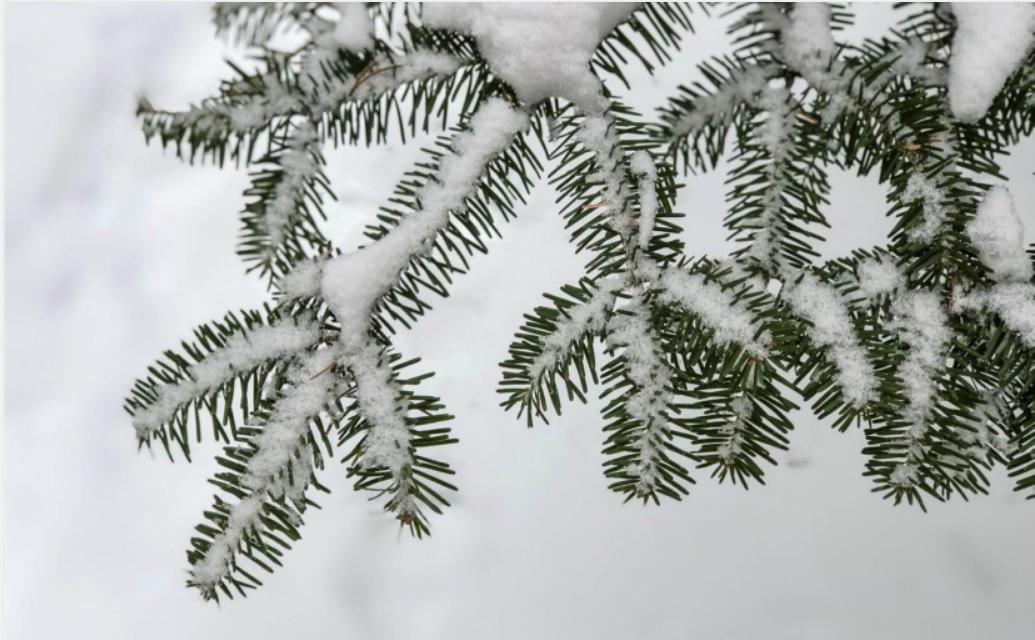What do trees do in the winter?

Well they can't go south, they can't bundle up, and they can't go inside. So how do they adapt?
Winter is a time where food is hard to come by. Its cold, which drains energy and life, and despite there being snow, the humidity is lower allowing living things to dry out. Just like animals use various strategies to survive these harsh climates, so do plants.
How trees withstand the cold - leaves
Leaves act as a solar panel and a food factory for the tree. Any sunlight, water, or nutrients from the soil are aquired as food for the tree. Before winter, trees pull out as much of the remaining nutrients in their leaves, if they didn't, they'd be lost and wasted to the extreme cold of winter.
For evergreens (pine, spruce, fir, ect) they've developed long, thin leaves that we refer to as needles. There waxy, thick exterior allows them to act as an insulator and retains moisture and reduces damage from cold temperatures.
How trees withstand the cold - the wood
Imagine a tree as just a huge drinking straw; long, tall, and for the most part straight, and their goal is to get water and nutrients up and down their length. (from the roots to the leaves) There are two specialized cells beneath the bark that allow the tree to do this, the xylem and phloem.
The xylem moves water and dissolved nutrients up from the roots to the leaves. The phloem moves food that is produced by the leaves down to the stems, trunk, and roots.
The extreme cold can damage these cells, meaning the tree wouldn't be getting the nutrients it needs to get through winter. But luckily trees have adapated to the climates of the north and have built a "hardiness" that can withstand temperatures as low as -40 F, this process is called supercooling.
Below -40 F however, even the water in the cells that are adapted for supercooling will freeze, resulting in death of that cell. That's why, on very cold nights, you can sometimes hear the wood crackling in certain trees. There are a select group of coniferous trees (those whose seeds come in cones) that are capable of withstanding these temperatures that include Jack Pine, Tamarack, both White and Black spruce, and Balsam Fir.
How trees withstand the snow
As if the harsh temperatures weren't enough, the tree's also have to deal with snow
Snow can be a heavy burden, quite literally, for trees in the winter. Especially when there are warmer temperatures and the snow becomes wetter. Deciduous trees adapt by dropping all of their leaves before winter so there is less area for the snow to accumulate on. Early snows in the fall often cause significant damage to trees that still have leave on their branches.
